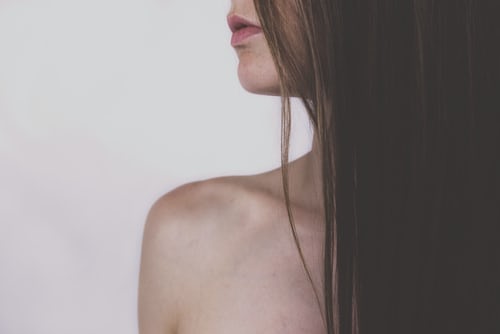Picking out the best hair loss shampoo can be quite challenging. Many options exist, but which fits your hair type? You need something that works for your own hair type.
Let’s break down how to figure out your hair and scalp type to make the best pick. Experts say it’s key to match the shampoo with your specific hair-loss goals. With this knowledge, you get a head start by knowing what you want, and soon, you’ll choose the best hair loss shampoo.
It’s not just about washing your hair; it’s about results!
Understanding Hair and Scalp Types
Importance of Knowing Your Hair Type
The first step in choosing the right shampoo is to understand your hair type. It’s like choosing the right pair of shoes; the wrong fit can cause discomfort or injury. Whether your hair is straight, wavy, or curly, every type has different needs.
For example, curly hair may crave moisture, while straight hair might need volume. Just as you would feel at ease in a perfect location that suits your preferences, your hair thrives when matched with the right care. Being aware of these nuances lets you steer clear of shampoos that might strip your hair of essential oils or damage it. Choosing a shampoo that’s ideal for your hair type can add moisture, shine, and bounce for healthier locks.
Determine Your Hair Type
To figure out your hair type, start with a simple checklist: assess your hair’s texture, thickness, and moisture levels. Is your hair fine or thick? Does it feel dry or oily? Weather can also come into play; humidity may render straight hair limp or make curls frizzy.
Conduct a strand test to check for porosity and elasticity by seeing if your hair floats or sinks in water. By writing these observations down, you can track that perfect shampoo for your hair. This will help you avoid dryness, breakage, and frizz from harsh products.
Identify Your Scalp Type
Your scalp type is just as crucial as your hair type in choosing a shampoo. Examine your scalp for dryness or oiliness. If your scalp feels tight or flaky, it might be dry, requiring a moisturizing shampoo.
Conversely, an oily scalp might need frequent cleansing to manage sebum production. A simple questionnaire can help categorize your scalp type, ensuring you select shampoos that match your needs. This approach helps avoid irritation or dryness from daily use of unsuitable products.
Characteristics of Oily Scalps
Oily scalps produce too much sebum, resulting in greasy, flat hair. To combat this, you may be washing your hair more frequently. Look for lightweight formulations that cleanse without stripping your scalp of moisture.
Ingredients like tea tree oil can help balance oil production, allowing you to maintain fresh, voluminous hair without washing it every day.
Characteristics of Dry Scalps
Dry scalps tend to be flakier and itchier, which can be quite annoying. Signs of dryness can include a tight feeling after washing. For these scalps, moisturizing shampoos with hydrating ingredients are the way to go.
Avoid shampoos that contain strong cleansing agents, as they can exacerbate dryness. Maintaining an ideal pH level in shampoos, slightly acidic between 4 and 5, can also help restore balance.
Key Ingredients in Hair Loss Shampoos
Ingredients for Dry and Damaged Hair
If your hair is dry or damaged, nourishing oils such as jojoba and argan are your friends. They moisturize and treat dryness of the scalp. Shea butter can do wonders too, repairing damaged cuticles and making your hair smooth.
Amino acids are another ingredient to look for — they restore moisture and elasticity. Opt for a shampoo that has deep-conditioning ingredients. It will help improve your hair texture and feel unbelievably soft.
Ingredients for Oily Hair
If you have oily hair, you’ll want a shampoo with clarifying properties. It removes buildup without stripping your hair of essential oils. Gentle exfoliating ingredients also help maintain a balanced scalp.
It’s all about lightweight formulations—those that clean your hair without weighing it down. Plus, having a fresh scent can help make washing your hair feel like a treat.
Ingredients for Color-Treated Hair
Color-treated hair needs a bit more love. Sulfate-free shampoos are also a must to preserve your color. In fact, ingredients that protect against UV rays can also protect your color from fading.
Moisturizing components are key since coloring tends to produce dryness. Shop for shampoos specifically formulated to maintain colored hair—they’re made to preserve the best of your mane.
Ingredients for Curly or Coily Hair
Curly or coily hair types should look for shampoos that define curls and combat frizz. Ingredients such as coconut oil and shea butter help keep curls hydrated. Products that enhance your curl pattern and provide bounce are also clutch.
Avoid sulfates, which can strip natural oils and leave curls feeling dry and brittle.
Ingredients to Avoid in Shampoos
Harmful Effects of Sulfates
For starters, let’s discuss sulfates. Sodium Lauryl Sulfate (SLS) and Sodium Laureth Sulfate (SLES) are known for stripping your hair of its natural oils. They leave your locks feeling dry and lifeless, which can make your hair feel brittle, especially if you’ve got color-treated hair.
Washing your favorite sweater in harsh detergent is not going to hold up. SLS can also be a nightmare for sensitive scalps, as it can irritate and cause allergic reactions. Have you ever had that itch after a wash? That may be why.
If you prefer to keep your skin’s natural moisture intact, look for sulfate-free products. These products help you prevent excess dryness from occurring. Plus, if you’ve got colored hair, they help keep your shade longer.
Risks of Silicones and Alcohol
Silicones might seem fancy, but they really weigh down your hair. Over time, this build-up leaves your locks feeling heavy and lifeless. It’s like wearing a raincoat on a sunny day—it just feels wrong.
Additionally, some alcohols found in hair products can cause your strands and scalp to dry out. This is similar to when you use an astringent on your face, leaving you feeling taut and prickly.
For a lighter, more natural feel, opt out of heavy silicones and choose alcohol-free formulations. This way, you can keep your hair hydrated and bouncy.
Avoiding Parabens
Parabens, including butylparaben, ethylparaben, and methylparaben, have been associated with hormone disruption and even breast cancer. These preservatives can also irritate your skin.
A good rule of thumb is to look for paraben-free shampoos. Clean beauty standards are significant here, as natural ingredients reign supreme over synthetic ones.
Organic shampoos are fantastic options if you’re looking for a safer, more natural hair regimen.
Selecting the Right Shampoo for Hair Types
For Straight Hair
The right shampoo for straight hair will change all that. Straight hair often craves balance, so consider shampoos that provide shine and manageability. Lightweight formulas are important — especially if your hair is fine because they won’t weigh it down.
If your hair is on the thinner side, volumizing shampoos can give you that extra body you’re looking for. Additionally, if frizz is your nemesis, smoothing shampoos keep flyaways at bay.
For Wavy Hair
For those who have wavy hair, keep it hydrated. Hydrating shampoos that enhance your natural wave patterns can be your best friend. You want products that will define your waves without the crunchy feel.
Anti-frizz shampoos will help keep your waves looking smooth and styled. If you love some bounce, look for formulas that will give you volume. These products will respect your hair’s natural texture while enhancing it.
For Curly Hair
Curls need love, and a moisturizing shampoo that nourishes and defines is a great option. Sulfate-free options are worth considering because they help retain moisture, which is important for curls.
Seek out ingredients that add life to curls, so you get springy, vibrant ringlets. Don’t forget a leave-in conditioner for that extra hydration boost your curls will relish.
For Coily or Kinky Hair
Since coily or kinky hair thrives on moisture, deep moisturizing shampoos are essential. Products that have slip help with detangling, which makes wash days easier.
Shampoos that are high in natural oils, such as argan or jojoba, can improve curl definition and health. It’s all about striking that perfect balance that suits your hair’s unique needs.
Matching your shampoo to your hair type is more important. It’s all about striking that ideal triad of moisture, shine, and bounce.
Conclusion
Choosing the best hair loss shampoo doesn’t have to be overwhelming. Understanding your hair type and the ingredients that work for you is a great start. Pay attention to your scalp’s needs, prioritize beneficial ingredients, and steer clear of harmful ones
Your hair deserves thoughtful care, and with the right shampoo, you can make a real difference. Take your time, experiment, and find what works best for you. Your hair care journey starts now, so embrace it with confidence. And if you found these tips helpful, feel free to share them with a friend who might benefit, too!







